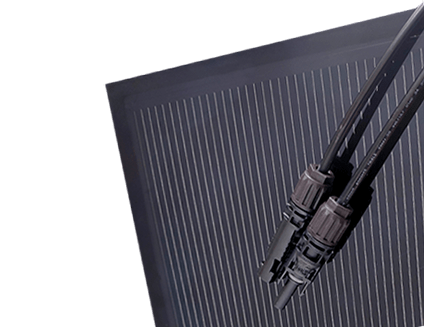
SOLARBOT
The subject of the SolarBot project is to eliminate the existing technological obstacles by developing and implementing a new technology enabling the construction of SolarBot — devices designed for cyclic cleaning of the surface of solar farm collectors.
The main goal of R&D works is to develop and implement a technological solution that will enable effective removal of pollutants from the surface of cleaned solar collectors that reduce the efficiency of obtained energy, in particular organic dust and other dirt. Cyclical cleaning of the surface of photovoltaic collectors is carried out automatically in various weather conditions (also during rainfall).
Basic technical parameters of SolarBot:
- Weight 45 kg
- Travel speed 1 m/s
- The head working feed automatically adjusts to the current state in which the cleaning robot is currently moving.
- Rotational speed for cleaning selected by the program depending on the degree of demand.
- Light, very durable structure made of aluminum alloy ensuring high rigidity of the entire system during movement.

SOLARBOT project in numbers:
The aim of the project is to create a new technology and develop the current solutions for the cyclical cleaning of the surface of photovoltaic collectors in an automated manner in various weather conditions.
The main motive and justification for the implementation of the project are problems related to:
- the lack of resistance of the robots on the market to difficult weather conditions;
- low work efficiency in various weather conditions, such as: rain, snow, icing, etc;
- the inability to work in a polluted environment, e.g. with polluted air on chicken farms, in large urban agglomerations, etc.
- Purchase of software for modeling and designing mechanics and electronic systems — PLN 12,960
- Purchase of fixed assets (machines, devices) — PLN 87,320
- Purchase of the service of developing a system of visual control of solar panels — PLN 30,000
- Construction of 33 device prototypes.
As a result of the project, in 2022 a new product for the market and the company will be introduced — an autonomous cleaning robot.
- Number of enterprises receiving support — one
- Number of enterprises receiving subsidies — one
- Number of enterprises incurring investment outlays on R&D activity — one
- Number of enterprises supported in the scope of conducting R&D works — one
- Number of enterprises supported in the implementation of the results of R&D works — one
- Number of acquired intangible assets — 3
- Number of introduced product innovations — one
- Number of R&D results implemented — one
- The number of scientific and research equipment purchased — one
SolarBots operating as part of a photovoltaic farm are linked into one system using wireless communication with the server. They form a group of cleaning robots controlled centrally by algorithms designed for this purpose. The application (also available in the mobile version) will adjust the movement and working time of devices to the weather conditions of a given location.

SolarBots operate in 2 modes:
In the cleaning mode, robots, using intelligent brushes designed especially for this type of tasks, ensure that the photovoltaic panels absorb as much light as possible, regardless of dust or weather conditions.
In the inspection mode, an advanced image processing algorithm (in infrared and visible light) assesses the condition of the surface and informs the control panel about the state of the panel on an ongoing basis via radio links. In this mode, you can also detect mechanical damage, such as glass breaks or scratches that require service interventions.
Roltec’s SolarBots have their own independent power source, which makes them even more autonomous.
The investment is in line with the assumptions:
- Strategy for smart, sustainable and inclusive growth Europe 2020 — the project will influence the implementation of innovative solutions and increase the level of innovative investments in the EU. The applicant, as a company from the SME sector, develops the industrial base, which increases the economic competitiveness of the region, as well as national and European.
- Of the Updated Development Strategy of the Greater Poland Region until 2020 “Wielkopolska 2020” — one of the most promising industries is the production of machinery and equipment, the implementation of the project directly affects the implementation of the strategy objectives (objectives 4.2, 6.1 and 6.5).
- Regional Innovation Strategy for Greater Poland for 2015–2020. The update (implementation) of a new technology for the production of robots for cyclical cleaning of the surface of photovoltaic collectors is part of the areas of intelligent specialization “Industry of tomorrow”.
The Development Strategy for the City of Poznań 2020+ — the project is part of the “Modern Entrepreneurship”.



